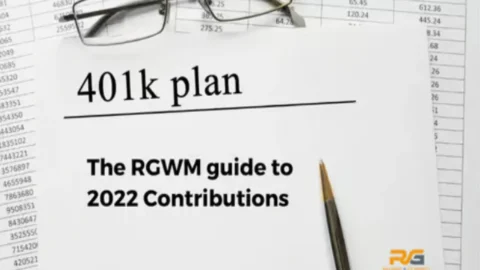Microsoft Corporation Deferred Compensation Plan
Understand The Capability Of The Microsoft Deferred Compensation Plan
A beneficial tax planning strategy is available for high-income earners Level 67 or higher at Microsoft through Microsoft’s Deferred Compensation Plan (DCP). This plan allows high-income earners to shift income earned in years where they might be in higher tax brackets to years when they will hopefully be in lower tax brackets. The DCP can be very complex, and it is advised that you talk to a financial planner to discuss all of the benefits and options available to you.
The funds you elect to defer in Microsoft’s DCP differ from those you contribute to your 401(k). These fund contribution elections cannot be made at any time as a Microsoft employee can do with their 401(k). Instead, there are two windows that Level 67 and above employees must make a DCP election. The first widow is May 1-31. During this window, a Microsoft employee may elect to defer up to 100% of their next year’s September cash bonus. The second window is November 1-30. During this window, a Microsoft employee may elect to defer up to 75% of their salary. Once funds are placed into the Deferred Compensation Plan, they can be invested and grow tax-deferred. Microsoft gives several different investment options for the Deferred Compensation Plan similar to those found in Microsoft’s 401(k). While the funds are not actually invested, Microsoft tracks the performance of the investment options as if the funds were invested and assumes the risk of paying out the DCP contributions and earnings (known as a “deemed investment”). With these funds out of your annual income, you will pay less in taxes in the current year and shift the income to later years when you are taxed at lower rates. This will decrease your lifetime tax bill and keep more of your hard-earned cash in your pocket.
Before making elections during this window, Microsoft employees will want to look at their family’s cash flows and expenses to ensure they are not deferring too much or too little to the Deferred Compensation Plan. You can supplement your cash flow with different methods, such as cashing out your RSUs when they vest or drawing on after-tax investment assets to keep your tax bill down. Again, we recommend sitting down with a financial planner to prioritize these tax benefits and cash flow needs before making your Deferred Compensation Plan election.
Once you have stored money in your Deferred Compensation Plan, Microsoft gives you several methods to pull the funds out. The most common methods are either to take a lump sum distribution of your Deferred Compensation contributions or to receive the funds over a 3-to-15-year installment plan. Money that is distributed from the Deferred Compensation Plan is taxed as ordinary income. If the lump sum method is chosen, the funds can be rolled into a Traditional IRA account and continue to grow tax-deferred until the funds are withdrawn. This method allows for even more tax planning solutions focused on distribution timing, RMDs, and QCDs.
Need Some Help?
If you’d like some help from one of our CPAs or CERTIFIED FINANCIAL PLANNER (CFP®) advisors regarding this strategy and how it applies to you, the Rhame & Gorrell Wealth Management team is here to help.
Our experienced Wealth Managers facilitate our entire suite of services including financial planning, investment management, tax optimization, estate planning, and more to our valued clients.
Feel free to contact us at (832) 789-1100, [email protected], or click the button below to schedule your complimentary consultation today.
IMPORTANT DISCLOSURES:
Rhame & Gorrell Wealth Management is not affiliated with or endorsed by Microsoft. Corporate benefits may change at any point in time. Be sure to consult with human resources and review Summary Plan Description(s) before implementing any strategy discussed herein.Rhame & Gorrell Wealtha Management, LLC (“RGWM”) is an SEC registered investment adviser with its principal place of business in the State of Texas. Registration as an investment adviser is not an endorsement by securities regulators and does not imply that RGWM has attained a certain level of skill, training, or ability. This material has been prepared for informational purposes only, and is not intended to provide, and should not be relied on for, tax, legal or accounting advice. You should consult your own CPA or tax professional before engaging in any transaction. The effectiveness of any of the strategies described will depend on your individual situation and should not be construed as personalized investment advice. Past performance may not be indicative of future results and does not guarantee future positive returns.
For additional information about RGWM, including fees and services, send for our Firm Disclosure Brochures as set forth on Form ADV Part 2A and Part 3 by contacting the Firm directly. You can also access our Firm Brochures at www.adviserinfo.sec.gov. Please read the disclosure brochures carefully before you invest or send money.













